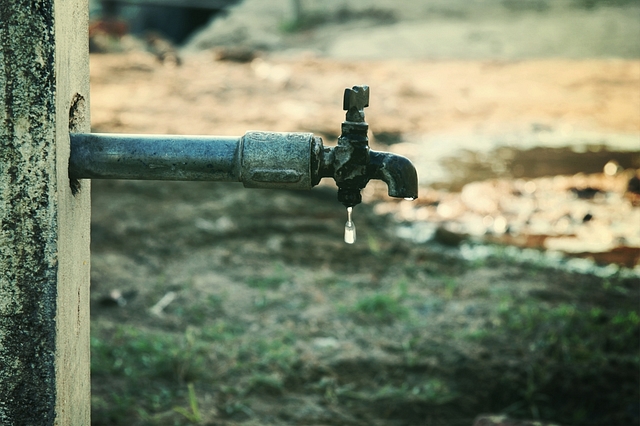
Smart Water Solutions for a City - II
This article is part of Smart Water Solution series.
The solution that we are going to discuss is Water and Energy Conservation in the distribution of Water.
This solution will help in making sure that the right amount of water is present either in the reservoirs or overhead tanks at minimum cost of operation of the pumps in the pump-houses.
The solution will be using a combination of Internet of Things (IoT), Predictive Analytics and Optimisation techniques.
Before explaining the solution let me give a view of how water flows into your taps at your houses.
Cities usually source the water from rivers, lakes and ground water reservoirs. From these water sources, the water is pumped (through pumps in the pump-houses) into treatment plants via pipes. The water is cleaned at the treatment plants and from the treatment plants it goes into reservoirs. The reservoirs store the treated water. Water is then pumped from these reservoirs to the overhead tanks through a different set of pumps residing in the pump-houses. Once the water reaches the overhead tanks, it reaches the houses and factories through gravitational forces. In some cases the water is directly supplied from the reservoirs to the houses.
The diagram below illustrates the flow with numbers:
Coming back to the solution, there will be level sensors present in the reservoirs and overhead tanks. Level sensors are devices which help in ascertaining the level of water or any liquid in a tank or reservoir and communicate that to a central server using various communication modes.
These level sensors will be sending information about the water levels at the reservoirs and overhead tanks on a periodic basis. By knowing the level of water, it is possible to calculate the volume of water present in the tanks and reservoirs. That takes care of one part of the solution.
The next part would be determining the demand of water a city would require for the next day. The city authorities can anticipate that using predictive analytics. Predictive analytics can forecast the water consumption for the city based on historical consumptions as well as taking into consideration the weather, holidays, events etc. For example, water consumption in the month of winter might be less, and in the case of festivals like Holi (played with water and colours) water consumption would be higher.
Taking into cognisance the water present at the overhead tanks and the reservoirs vis-a-vis the water that is required for the next day, the solution then generates a schedule for the water pumps to ensure that the water requirement is met for the city.
The solution doesn’t culminate here. What if the prices of energy changes through the day, in that case the city authorities can save energy costs by running the pumps when the cost of electricity is least and at the same time ensuring that water levels are maintained at the overhead tanks and reservoirs to meet the city’s water demand. The changes in the prices of energy in the above case is static, which means that city authorities know that, for a particular hour for a day, the price would be fixed.
Lastly the solution also factors the schedule maintenance or shutdown of the pumps.
The scheduling of the pumps would require application of optimization techniques.
The goal of the optimization technique would be to ensure that the water is supplied by the pumps to overhead tanks and reservoirs to meet the city`s water demand, keeping the energy costs lowest and factoring the capacity of pumps at various times (since a shutdown of the pump will change the capacity of the pumphouse).
In some cities (though not in India) the prices of energy are dynamic. This means that they keep changing depending on the demand of electricity by the consumers, the supply they have and the price at which the city is procuring energy. In this case the solution with the help of predictive analytics determines prices of energy for the following days at different hours and then they run the optimization algorithm to generate the schedule of the pumps.
I am recapping the solution in steps below for better understanding.
Step:
1) Through the level sensors in overhead tanks and the reservoirs the water available for supply is ascertained.
2) The Water required for the next day is forecasted using Predictive Analytics.
3) Water required for the city is arrived at by subtracting existing water levels from the water demand predicted.
4) Pump schedule is generated which will meet the water requirement, while minimizing the energy consumptions of the pumps as well taking into consideration the scheduled maintenance of the pumps and their shutdowns.
5) Lastly illustrating the working of this solution along with the Solutions blocks of the Smart City Solutions as described in the articles. Networks to run a Smart City – I and Networks to run a Smart City – II
1) Level sensors send the information regarding the level of the water in the tanks and reservoirs at regular intervals.
2) The information is received by the integration engine
3) The information is stored in the data repository
4) Predictive analytics is run to predict the demand of water for the next day and the requirement of the water that needs to be pumped is ascertained taking into consideration the existing water present at the tanks and reservoirs.
5) Energy prices for the following day are fetched from the energy application.
6) Pumps scheduled maintenance as well the breakdown information is fetched from the works or maintenance management applications for water.
7) The information steps 5 and 6 is captured by the Integration engine.
8) Optimization algorithm is run to determine the pump schedule
9) The information is shown in the portal for the city authorities to act upon.
Watch this space for more articles on Smart Cities.